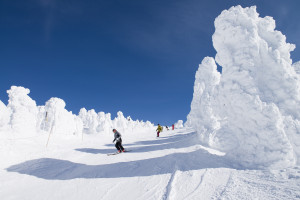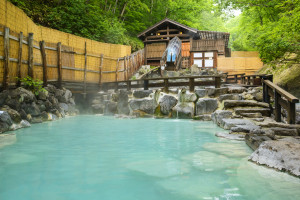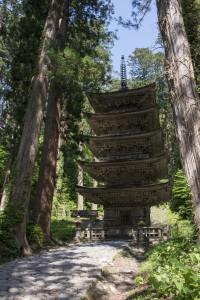 Yamagata, meaning ‘mountain shape’ in Japanese, is a prefecture located in the north-eastern area of Japan, bordering the Sea of Japan. The prefecture is home to picturesque mountains, parks, and hot springs, making it impossible to sum up the beauty of the prefecture in just a few words.
Yamagata, meaning ‘mountain shape’ in Japanese, is a prefecture located in the north-eastern area of Japan, bordering the Sea of Japan. The prefecture is home to picturesque mountains, parks, and hot springs, making it impossible to sum up the beauty of the prefecture in just a few words.
The esteemed Mount Zao is one of the prominent representative symbols of Yamagata Prefecture. In the winter months of January and February every year, tourists from around the world travel to Mount Zao to see the renowned juhyo, an entire forest of snow-covered trees known as ‘snow monsters’. The surreal sea of snow monsters is formed only in specific climates and geographic conditions.
Located very close to the snow monsters is the Zao Hot Springs Ski Resort, one of the most extensive ski resorts in Japan with ski courses suitable for skiers at different skill levels. Below the ski resort area on Mount Zao is the Zao hot spring village. Discovered in the year 110 AD, the hot spring in the village is known as ‘the Princess Hot Springs’ and ‘the Fountain of Beauty’, and the acidity of the hot springs in this area are said to be able to heal skin and digestive conditions. 
Yamagata Prefecture also have year-round ski and snowboarding adventures available. In the northern areas of the Prefecture is Mount Gassan, the highest mountain out of the Three Sacred Mountains of Yamagata. The ski season of Mount Gassan starts in April and ends in mid-July, which is the summer season that ski resorts around Japan are normally closed. Due to the heavy snowfall throughout winter and the high altitude of the mountain, the snow melts at a slower rate, offering a unique experience for skiers and snowboarders to enjoy their favourite snow activity while wearing a t-shirt!
Mount Haguro is another mountain of the Three Sacred Mountains of Yamagata. Religious pilgrims and travellers visit the mountain throughout the year to trek up the stone steps surrounded by 600-year old cedar trees. Along the way to the summit, there are temples, shrines, and a five story wooden pagoda that has been designated as a national treasure of Japan. Near the pagoda is the ‘Grandpa Cedar Tree’, a cedar tree estimated to be 1,000 years old and has a trunk base circumference of 10 metres.
 Another hiking location in the prefecture is Yamadera, a picturesque temple in the mountains close to Yamagata City. The temple’s official name is Risshakuji, but is commonly known as Yamadera, which means ‘mountain temple’. The temple was founded in 860 AD and inside the temple’s main hall is a sacred ritual flame that has been burning since the structure’s foundation. The most famous structure of the temple is a platform on top of the mountains where visitors can relish the breathtaking views of the valley and mountain surroundings. The temple is also known to be where the famous Japanese Haiku poet, Matsuo Basho, visited and composed many of his famous poems.
Another hiking location in the prefecture is Yamadera, a picturesque temple in the mountains close to Yamagata City. The temple’s official name is Risshakuji, but is commonly known as Yamadera, which means ‘mountain temple’. The temple was founded in 860 AD and inside the temple’s main hall is a sacred ritual flame that has been burning since the structure’s foundation. The most famous structure of the temple is a platform on top of the mountains where visitors can relish the breathtaking views of the valley and mountain surroundings. The temple is also known to be where the famous Japanese Haiku poet, Matsuo Basho, visited and composed many of his famous poems.
For more information please visit: http://yamagatakanko.com.e.db.hp.transer.com/
(Please note that the above website is translated using automatic translation and the information may not be 100% accurate.)






 From the 3rd to the 13th of December, eight selected swimmers from the Fukuoka Swimming Association visited NSW, where they participated in joint training sessions with a local school and competed in the 2024-25 Speedo NSW Senior State Age Championships.
From the 3rd to the 13th of December, eight selected swimmers from the Fukuoka Swimming Association visited NSW, where they participated in joint training sessions with a local school and competed in the 2024-25 Speedo NSW Senior State Age Championships.

